What have the Romans ever done for us? They made the Cotswolds Britain's beating heart
The confident and aggressive Romans brought savagery, great taste and efficiency to the Cotswolds, crowning Cirencester Britain’s second city
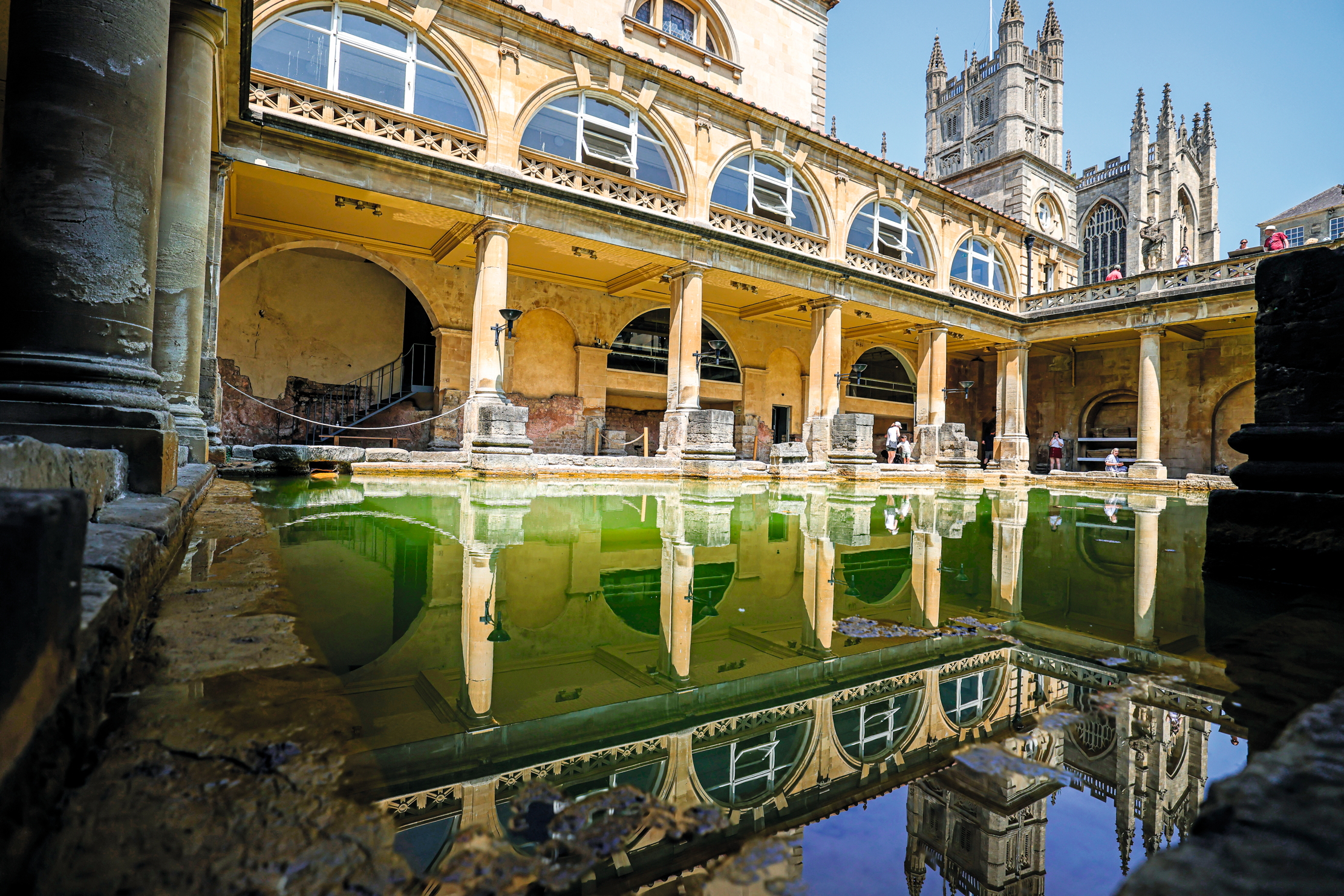
The Emperor Claudius, whose mother once described him as ‘not so much unfinished by nature, as barely begun’, ordered the invasion of Britain in AD43. A legion crossed the Cotswolds unopposed and came to a pagan temple set by inviting hot springs. They liked it. By AD75, the Romans had built a classical temple and bathing complex there — a blend of healing, restful sophistication and imaginative architecture at the edge of the known world. They called it Aquae Sulis: Bath. It heralded a transformation.
The former Cotswold elite, nobles of the Dobunni tribe, were recruited into a new ruling class — a Roman method of governing that was admired by the orator Aristides: ‘There is nothing like it to be found anywhere else at all.’ Roman control lasted 400 years, nearly as long as the time between Charles I and Charles III, so conditions varied considerably. However, the Cotswolds were always desirable and the 4th century was a golden age.
At that time, a splendid house in a wooded combe north of Cirencester, Gloucestershire, was in its remarkable prime — with courtyards, gardens, central heating, tessellated floors, inventive bathing facilities, communal lavatories and galleried wings. This was Chedworth, discovered in 1864, when Thomas Margetts, a keeper on the 3rd Earl of Eldon’s estate, found mosaic fragments when ferreting.
Chedworth is an example of the widespread construction of Roman ‘villas’ (country houses with farms) that stretched, in scores, from Woodchester near Stroud in Gloucestershire to Ditchley and Chipping Norton in Oxfordshire — but centred around Cirencester.

Bacchus, god of wine, cavorts across the mosaic floor of the triclinium (dining room) in Chedworth Roman Villa, Gloucestershire.
What was life like then? Britain’s population, scarcely two million, was scant, rural and young. Life expectancy was about 30. About one-quarter were slaves — not a Roman introduction. Albeit traded internationally, as were wool, hides and hunting dogs, many were cherished. Wealthy families employed educated Greek slaves as physicians, managers or tutors. The governing class spoke Latin, as did soldiers and merchants, but most people were Celtic speaking: illiterate subsistence farmers living in wattle round-houses.
In the prevailing peace, some landowners expanded to farm on a substantial scale. Dr Neil McLynn, a Classics professor at Oxford, believes they prospered by selling food to the army. A puzzling feature of this theory is that in areas of major military concentration, as in the North, few villas have been found. Tim Copeland, author of Roman Gloucestershire, thinks wealth was based on ‘long-distance agricultural trade’. Certainly, much corn was exported to Gaul (an area encompassing modern-day France, plus parts of Belgium, Germany and Italy).
Whatever the explanation, a rich, socially competitive upper class developed, including magistrates and councillors (who ran the towns), tax collectors and even the odd banker. These were mostly indigenous people imitating Romans, rather than actual Romans.
Exquisite houses, the beauty of Nature, and how to get the most from your life, straight to your inbox.
It was perhaps strange to replicate houses suitable for Italy in damp and chilly Britain. Nonetheless, the villas were agreeable places, often set on slopes with springs of running water, in landscapes of which Poussin or Repton would have approved. They incorporated underfloor (hypocaust) heating, with ducted walls, and windows were glazed. Food was varied and imaginatively prepared: oysters, snails, beef, pork, venison, boar, peacock and dormice were eaten (occasionally with false teeth), plus various vegetables. Figs, grapes, plums, apples, damsons, dates and coriander were introduced. Gallic and domestic wine was served, sweet and diluted, preferably by handsome youths.
Sparingly furnished reception rooms, lit by oil lamps, had frescoed walls, sculptures and mosaic floors of intricacy and symbolism, often laid by Cirencester craftsmen. At Woodchester, the musician Orpheus was depicted in one of the largest mosaics in Europe (now re-buried — a replica sold for £75,000 in 2010). Great Witcombe, a palatial villa at Brockworth in Gloucestershire, featured marine decoration.

Spa facilities matched modern health centres, with hot and cold plunge baths and saunas for convivial dry heat. North Leigh in Oxfordshire provided three bathing complexes. Oiled bodies were massaged and scraped refreshingly clean by attendants with strigils. Beards and sometimes depilation were periodically fashionable. Men and women usually bathed apart, but not always.
Bathing might have followed hunting. Very unlike a day with the Heythrop, the object was to chase prey into pre-set nets. A favoured participant then had the honour of despatching the entangled animal with a sword or spear. If it was a boar, this required courage and skill. Several breeds of hound were used: the Molossian, a mastiff type, suitable for boar and wolves — what Horace called ‘the shepherd’s dangerous friend’; the swift Laconian (for deer); the Agassian (tracker-dogs with good noses); and the accelerative Vertragus, for hare coursing.
Surviving a boar, a man might wish to give thanks. Villas and public places were equipped with shrines to a wide selection of household gods and other deities suitable for requests, sacrifices or curses. Mercury was popular. Christianity, initially risky, was cautiously emerging by the 4th century.
Few of the 50,000 troops in Britain were based in the Cotswolds. Cirencester often had a small cavalry squadron and Gloucester was a centre for retired veterans, who received land after 25 years’ service. Overall, as with the English in India, the military veneer was thin, although not invisible. It was possible to assemble formidable force when needed, as Boadicea had discovered.
During the Roman annexation, Cirencester grew from nothing to grandeur, with civic buildings never matched thereafter. Most notable was an imposing colonnaded basilica along which to stroll, containing courts and municipal offices. It was 337ft long (Birmingham’s 19th-century classical hall is 145ft). There was a spacious forum with a Jupiter column, shops jostling in profusion, workshops, food stalls, a market, farriers, tile makers, private schools (teachers paid no tax), public baths and stone town houses.
An 8,000-seat amphitheatre, matching the town’s population, supplied entertainment — pageants, executions, gladiators and animal massacres. Its grassy concavity is still impressive. There was a temple. The city walls, a prestigious 3rd-century creation with mighty gateways and limited military justification, enclosed 240 acres — slightly larger than Jerusalem.
Cirencester thus became Britain’s second city, an imperial provincial capital. Its buildings were financed by local magnates, rather as Victorian cities were embellished by ostentatious business generosity. The town’s excellent Corinium museum, directed by archaeologist Emma Stuart, is worth an unhurried visit for its evocative reconstructions.
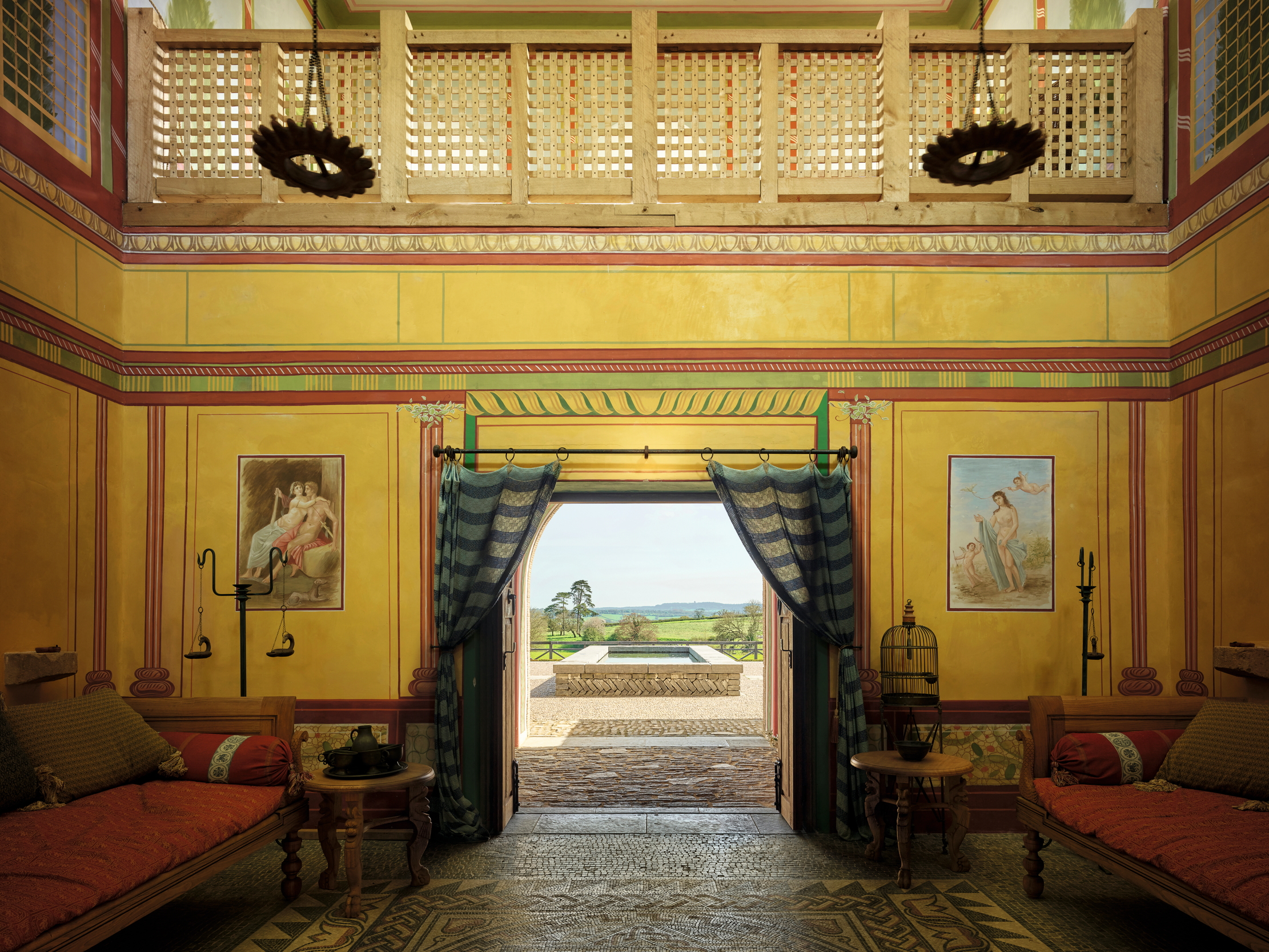
The Villa Ventorum, near Bruton at The Newt.
A fine modern re-creation of a Roman villa is in Somerset — the Villa Ventorum, near Bruton at The Newt, built by South African media titan Jacobus Bekker in authentic materials by traditional methods. The low, two-storey building replicates the sturdy yet stylish pillared elegance of the original, replete with a garden with medicinal and decorative plants, bakery and vineyard. It is a country house to compare to those of the 21st century.
Few people travelled much in Roman Britain, but militarily engineered roads speared through picturesque undulating Cotswold farmland and troops could move rapidly. Highways such as the Fosse Way and Ermin Street were unmatched for 1,500 years. Post houses provided change-horses for officials and accommodation for them and others. A postal service resembling the pony express intended for military communication carried private mail for a price and reached places within 15 miles faster than letters do now. Travellers were permitted to carry swords.
It was long assumed that society collapsed under Saxon incursion as the legions withdrew in about AD410, but recent excavations at Chedworth have revealed excellent mosaics laid long after that, so this process was slow. Mosaic expert Stephen Cosh, initially ‘reeling from the shock of this dating’, thinks decay came sooner in the eastern counties. (Interestingly, Palladio’s northern Italian villas were built 1,100 years later, under a similar threatening shadow of invasion.)
A substantial settlement has been found near Chipping Norton, frustrating a housing development. It will not be excavated. A profusion of coins had been unearthed in the vicinity over many years by local enthusiast Brian Cashmore, some prompting uncertainty about who was emperor at any one time.
The Romans were a confident, aggressive race who combined practicality with taste, efficiency with superstition and latent savagery with peace, in the Cotswolds hills, anyway. Their legacy surrounds us still.
Charles Harris KC was a judge for 24 years and is the author of Trial and Error (a polemic and memoir). His interested include history, stalking, skiing, politics, mountain walking, architecture and travel. He has ridden in the Rockies, trekked in Bhutan and written on a wide variety of subjects — from national anthems to cartoons, aviation to art and sculpture, and occasionally law. He lives in North Oxfordshire with his wife Carol, and has three adult children and eight grandchildren.
-
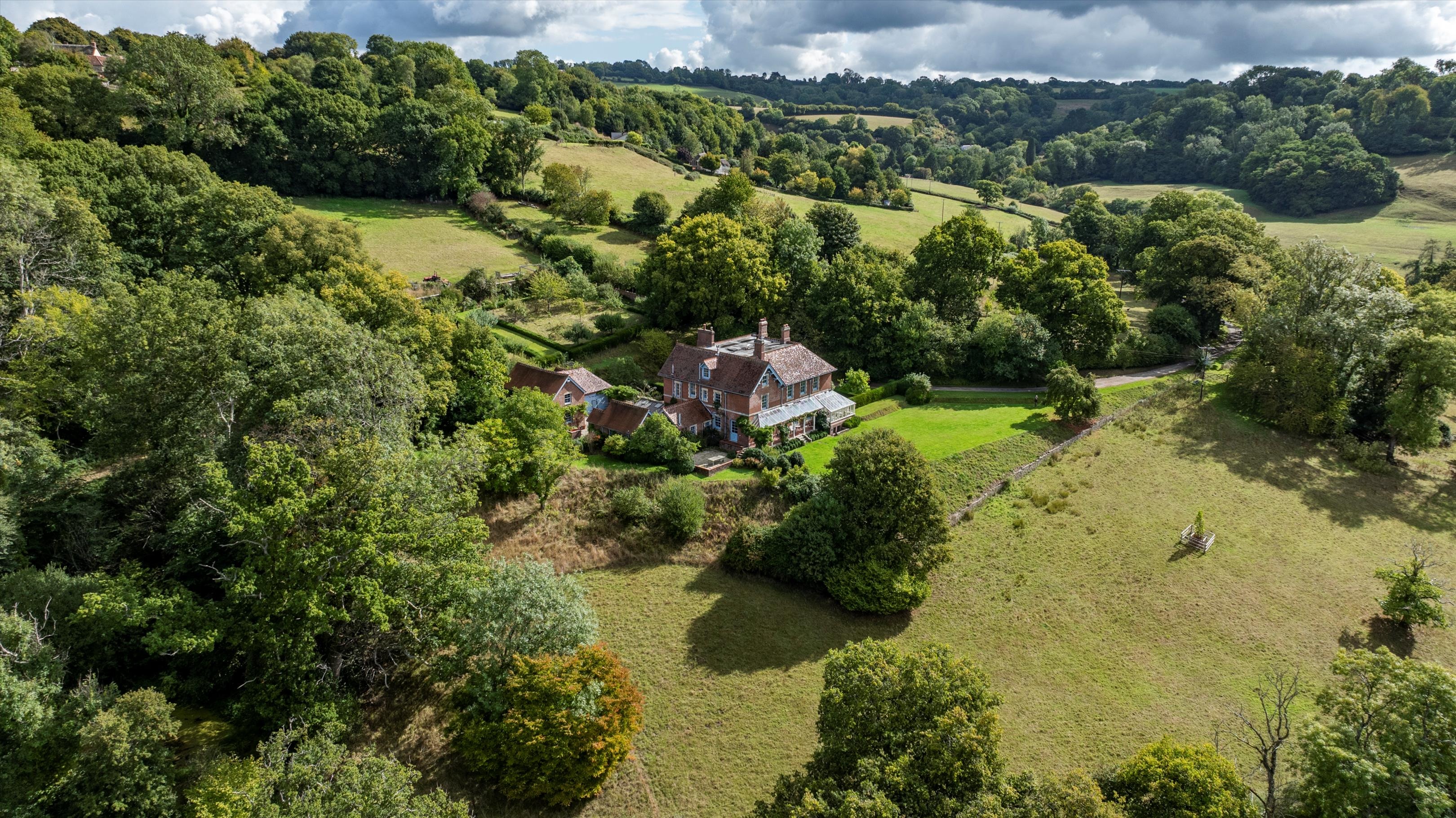 Utterly wonderful country homes for sale across Britain, from a 10-bedroom mansion to a Devon hideaway, as seen in Country Life
Utterly wonderful country homes for sale across Britain, from a 10-bedroom mansion to a Devon hideaway, as seen in Country LifeFrom an irresistibly charming house in Devon to a 400-year-old commutable home in Hertfordshire, here's our pick of some of the best homes to come to market via Country Life in the past week.
-
 Baby, it’s cold outside (even if you have a natural fur coat): How our animals brave the winter chill
Baby, it’s cold outside (even if you have a natural fur coat): How our animals brave the winter chillWhen the temperature drops, how do Britain’s birds, beasts and plants keep the cold at bay? John Lewis-Stempel reveals Nature’s own thermals.
-
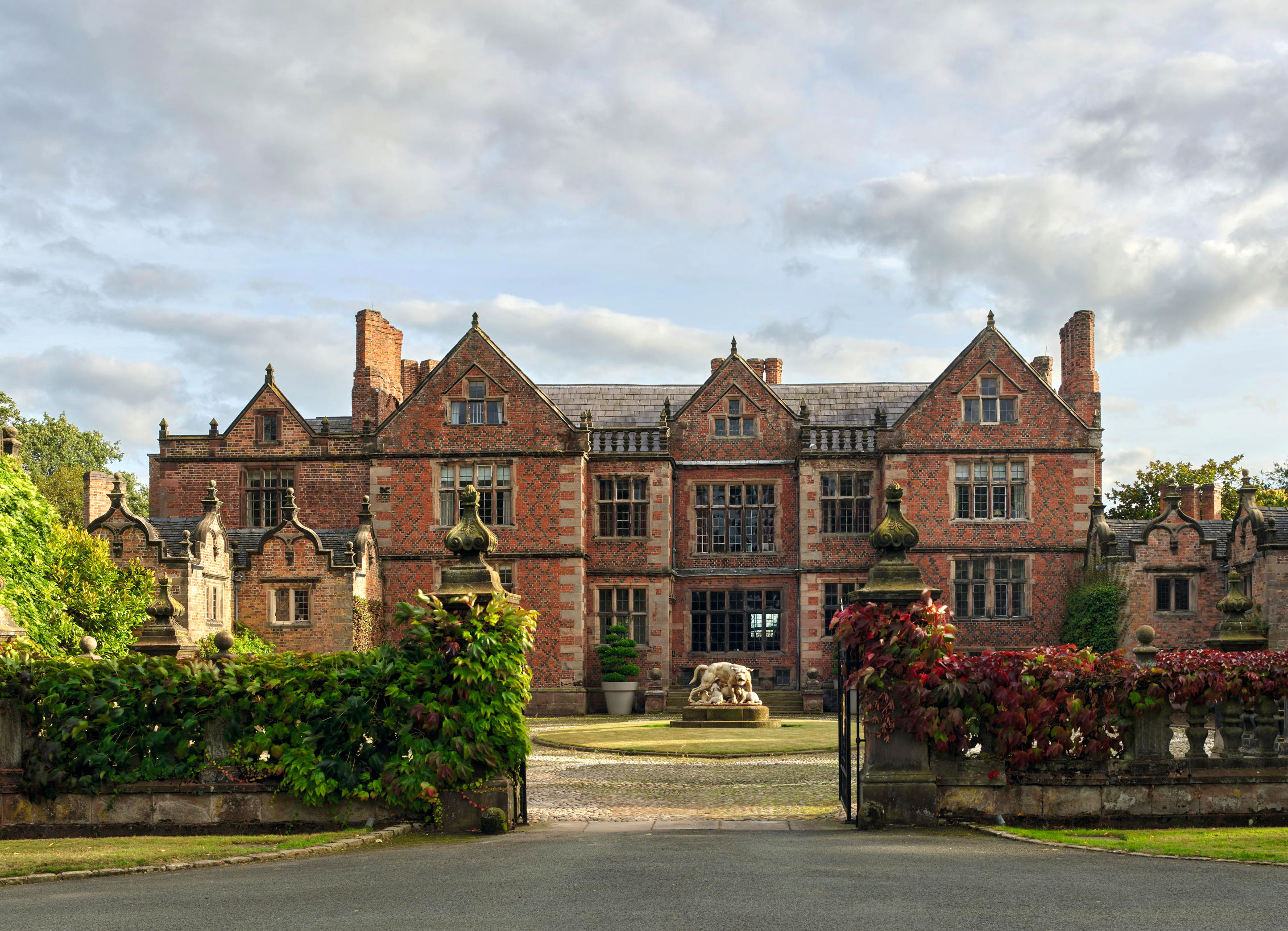 Dorfold Hall: The 'most neat and beautiful house of brick' that owes its existence to a desperate effort to secure succession
Dorfold Hall: The 'most neat and beautiful house of brick' that owes its existence to a desperate effort to secure successionDorfold Hall in Cheshire is an outstanding Jacobean house, but was an unexpected product of dynastic disappointment. John Goodall examines the remarkable circumstances of its construction; photographs by Paul Highnam for Country Life.
-
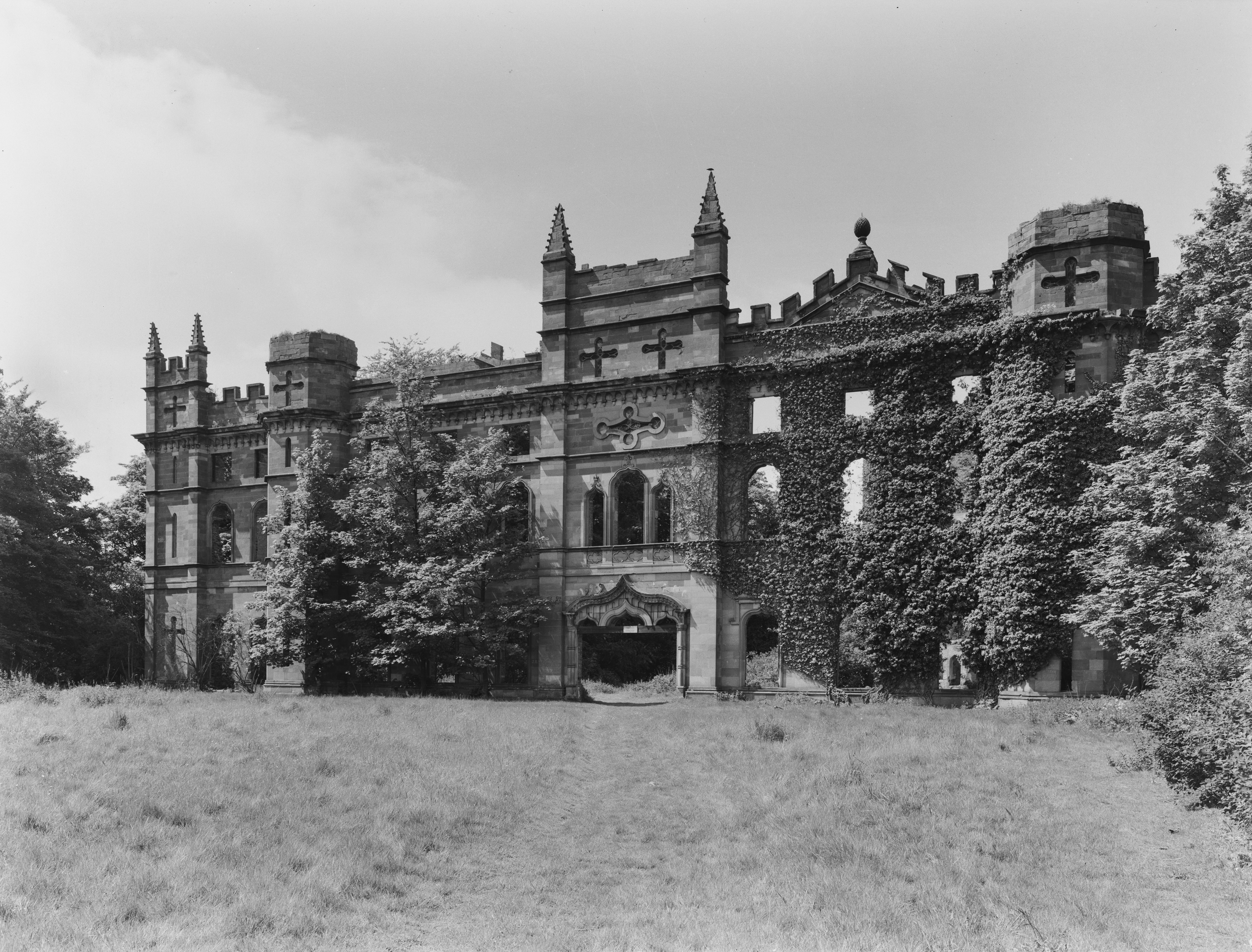 Only a handful of Britain's great houses were photographed by Country Life in a ruinous state. This once splendid Gothic castle is one of them
Only a handful of Britain's great houses were photographed by Country Life in a ruinous state. This once splendid Gothic castle is one of themThis is the tragic tale of Tong Castle, a once great Georgian-Gothic castle that was eventually consumed by Nature.
-
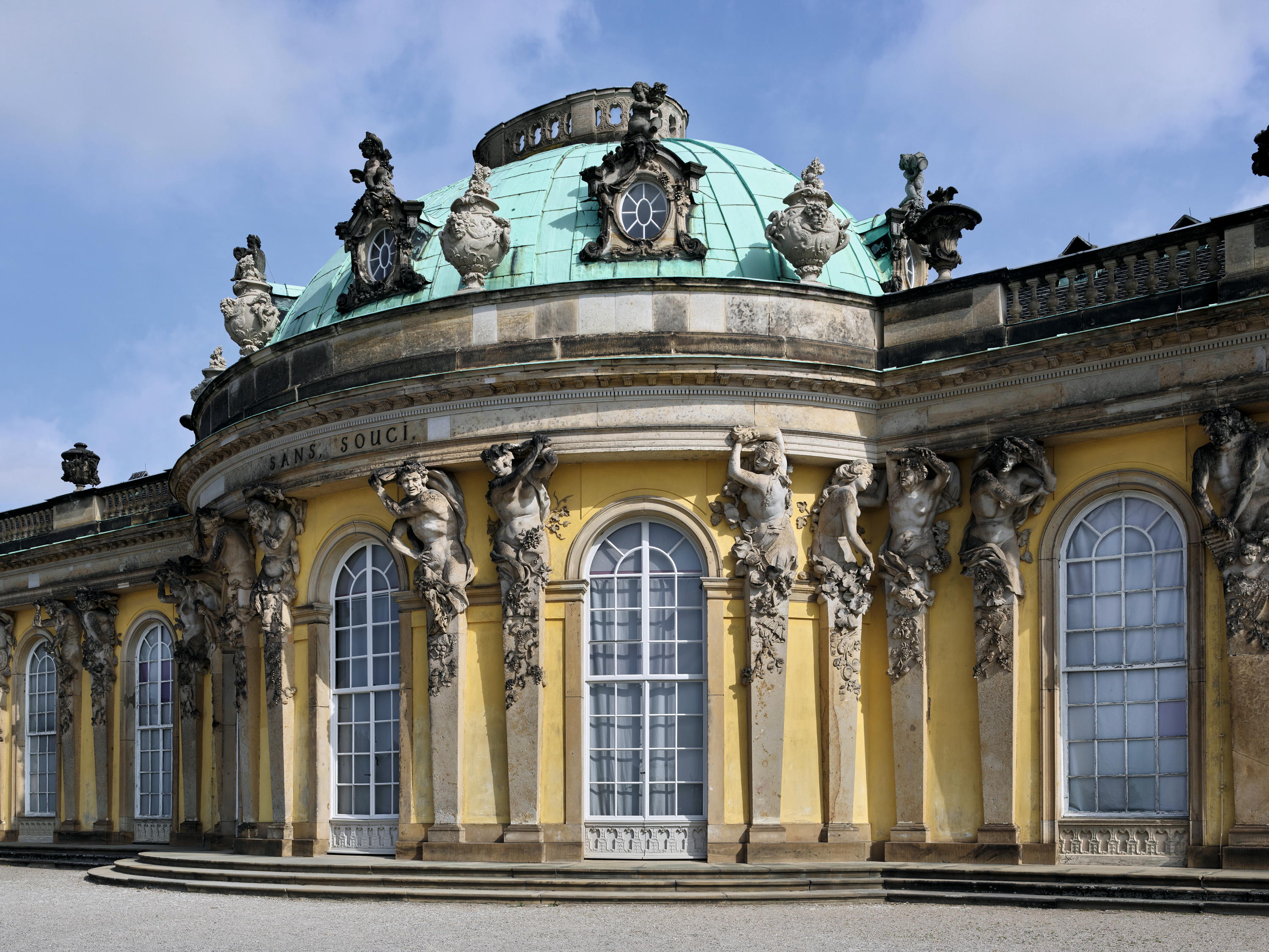 The Rococo jewel nestled into vineyard terraces that's a visual index of 'a king’s Enlightenment belief in knowledge, cultivation and the civilising power of Nature'
The Rococo jewel nestled into vineyard terraces that's a visual index of 'a king’s Enlightenment belief in knowledge, cultivation and the civilising power of Nature'A summer picnic in 1743 prompted Frederick the Great to create a retreat for himself outside his capital at Berlin. The result was the creation of Schloss Sanssouci in Brandenburg, as Aoife Caitríona Lau explains.
-
 Best in class: This year's Georgian Group Architectural Award winners revealed
Best in class: This year's Georgian Group Architectural Award winners revealedThe Georgian Group’s Architectural Awards, sponsored by Savills, attracted another outstanding crop of entries this year. We reveal the winners, as chosen by a panel of judges chaired by Country Life's Architectural Editor, John Goodall.
-
 The rise, fall, rise and eventual demolition of a Welsh wonder with an intriguing link to the Duke of Westminster
The rise, fall, rise and eventual demolition of a Welsh wonder with an intriguing link to the Duke of WestminsterMelanie Bryan delves into the Country Life archives and the history of one of Wales’s most extraordinary manor houses.
-
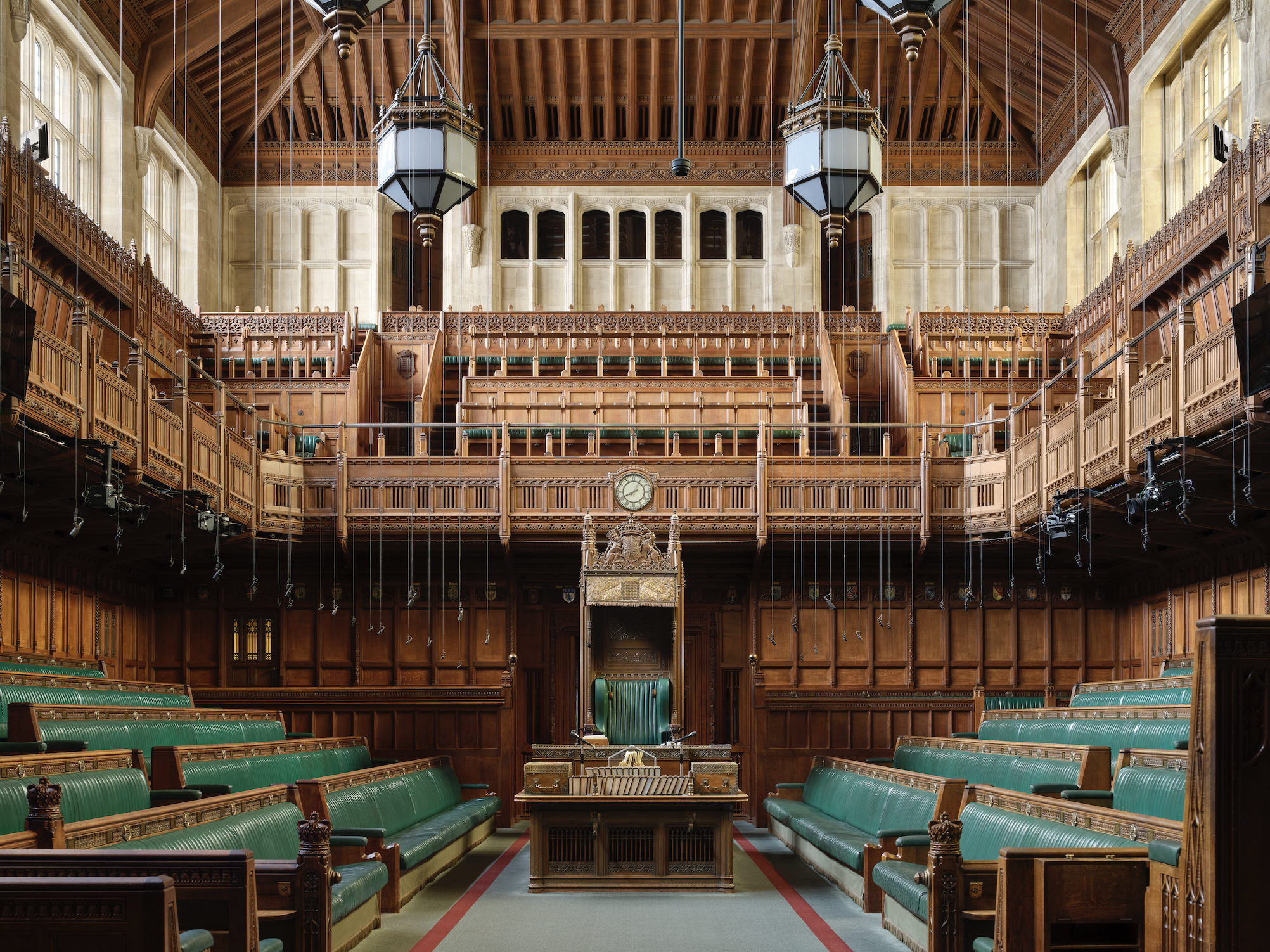 Exclusive: The House of Commons as you've never seen it before, 75 years on from reopening following its destruction during the Blitz
Exclusive: The House of Commons as you've never seen it before, 75 years on from reopening following its destruction during the BlitzThis year marks the 75th anniversary of the reopening of the House of Commons following the destruction of its predecessor in 1941 during the Blitz. John Goodall reports; photographs by Will Pryce.
-
 'A bluff, honest man in the trappings of greatness': The extraordinary story of the Foundling Hospital, and the sailor who saved the abandoned children of London
'A bluff, honest man in the trappings of greatness': The extraordinary story of the Foundling Hospital, and the sailor who saved the abandoned children of LondonA remarkable charitable endeavour to save abandoned children on the streets of London has a touching legacy in the form of the The Foundling Museum in the very centre of London. John Goodall tells its story; photographs by Will Pryce.
-
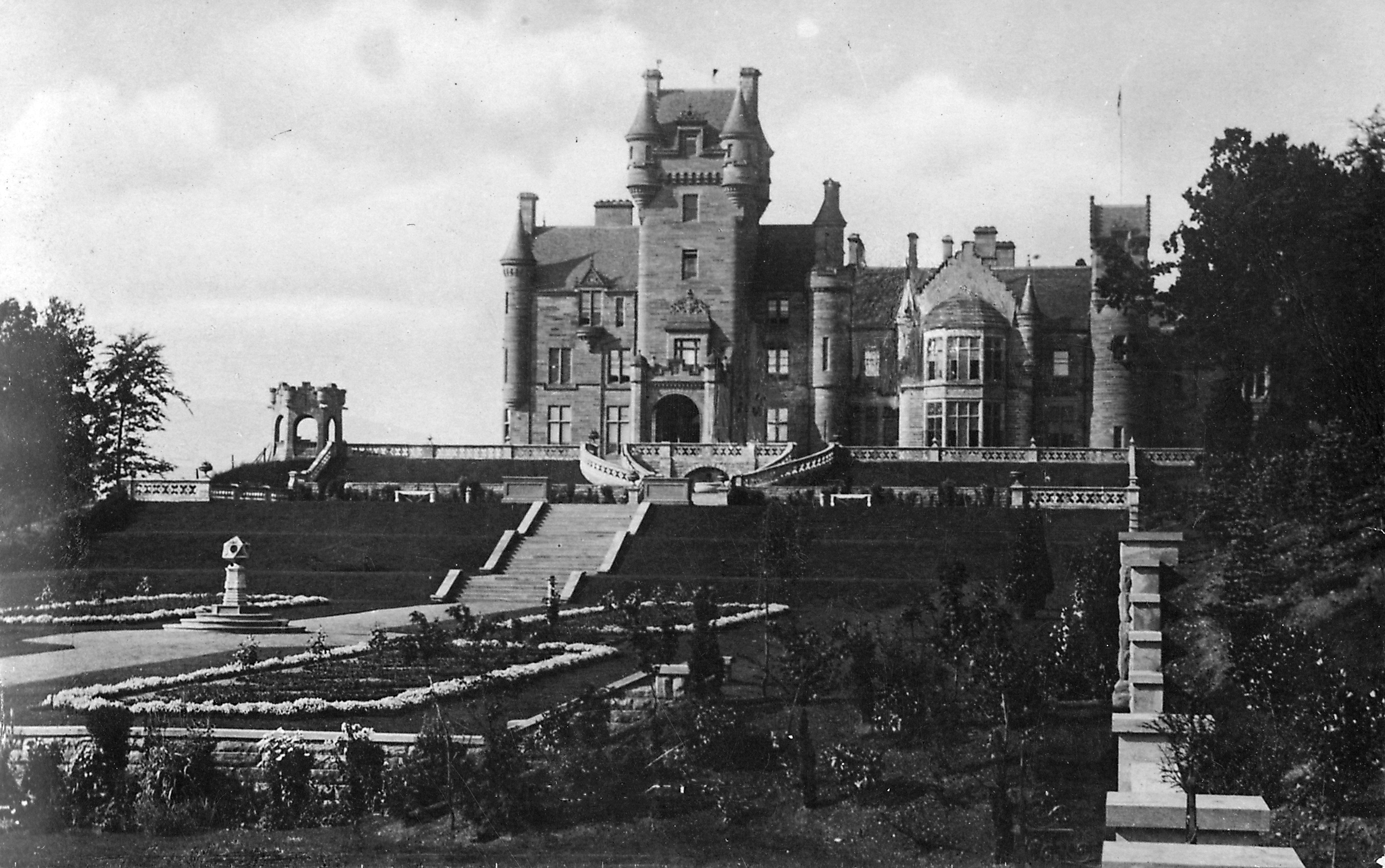 Where is 'The Traitors' filmed? Inside the Scottish castle sold via the pages of Country Life three times for an unbelievable amount
Where is 'The Traitors' filmed? Inside the Scottish castle sold via the pages of Country Life three times for an unbelievable amountMelanie Bryans delves into the Country Life archives and uncloaks the history of the turreted Highland castle made famous by the global TV franchise, 'The Traitors'.